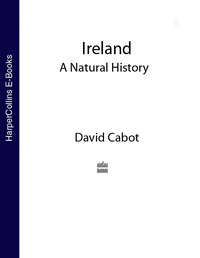
Полная версия
Collins New Naturalist Library


From F.H.A. Aalen, K. Whelan & M. Stout (eds) (1997) Atlas of the Irish Rural Landscape. Cork University Press.
See below for an accessible version of the map.
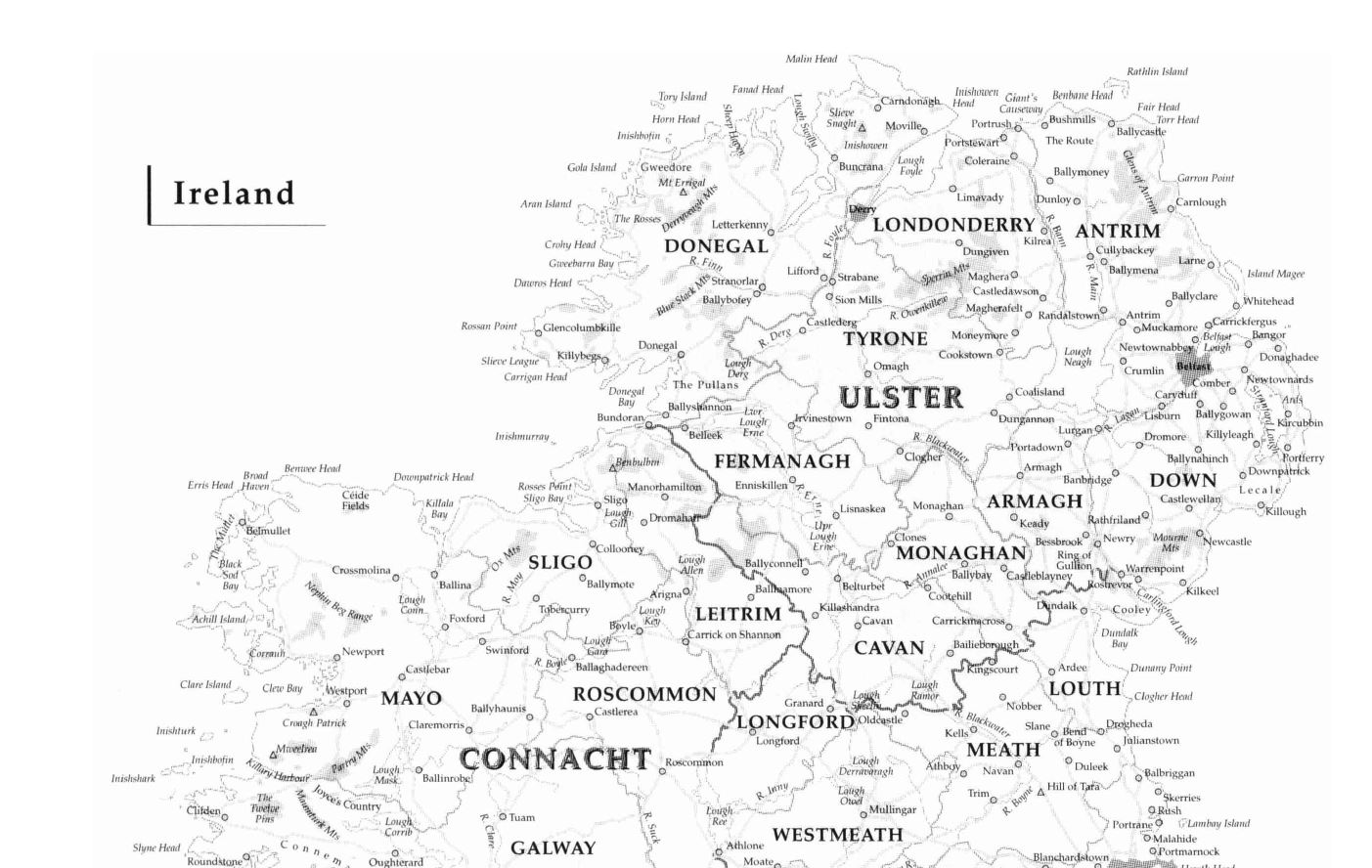
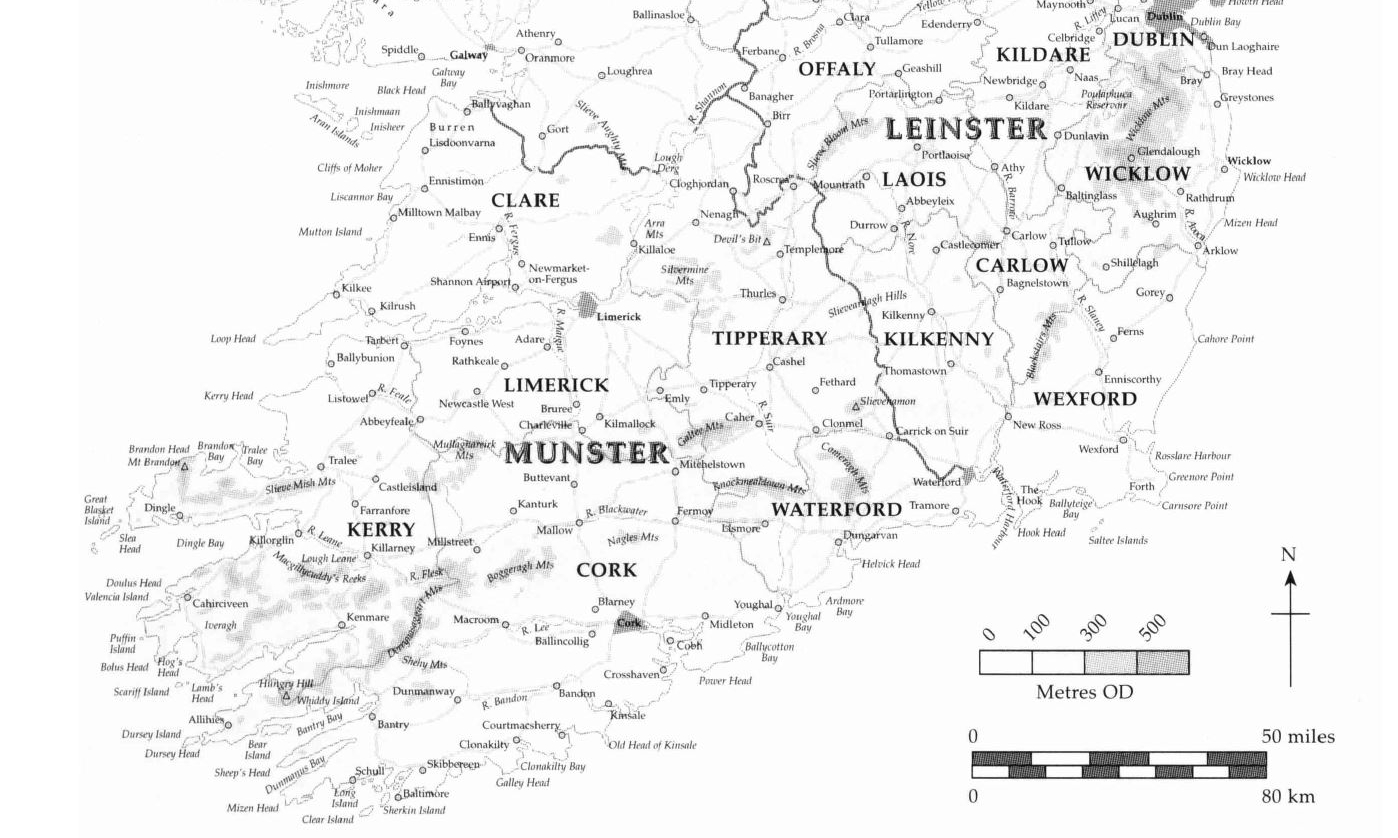
From F.H.A. Aalen, K. Whelan & M. Stout (eds) (1997) Atlas of the Irish Rural Landscape. Cork University Press.
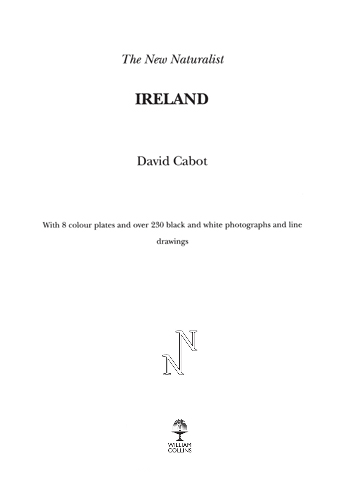
Copyright
William Collins
An imprint of HarperCollinsPublishers 1 London Bridge Street London SE1 9GF WilliamCollinsBooks.com This eBook edition published by William Collins in 2018
First published 1999
© David Cabot 1999
© in all photographs David Cabot unless otherwise stated.
The author asserts his moral rights to be identified as the author of this work
A catalogue record for this book is available from the British Library.
All rights reserved under International and Pan-American Copyright Conventions. By payment of the required fees, you have been granted the non-exclusive, non-transferable right to access and read the text of this eBook on-screen. No part of this text may be reproduced, transmitted, downloaded, decompiled, reverse engineered, or stored in or introduced into any information storage and retrieval system, in any form or by any means, whether electronic or mechanical, now known or hereinafter invented, without the express written permission of HarperCollins Publishers.
HarperCollinsPublishers has made every reasonable effort to ensure that any picture content and written content in this ebook has been included or removed in accordance with the contractual and technological constraints in operation at the time of publication.
Source ISBN 9780002200806
Ebook Edition © NOVEMBER 2018 ISBN: 9780007400423
Version: 2018-11-23
Dedication
For my parents, Isabel & Sid.
Contents
Cover
Title Page
Copyright
Dedication
List of Plates
Editors’ Preface
Author’s Foreword
1 Naturalists and their Works
2 Biological History
3 Mountains and Uplands
4 Peatlands
5 Lakes and Rivers
6 The Burren and Turloughs
7 Broadleaved Woodlands
8 Farmland
9 The Coastline
10 Islands
11 The Sea
12 Conservation of Nature
Picture Section
Appendices
Bibliography
Acknowledgements
Keep Reading
About the Publisher
List of Plates
Plate 1
Remains of a sixth century monastery, including a later twelfth century round tower, Devenish Island, Lower Lough Erne, Co. Fermanagh
Crucifixion slab, early Christian hermitage, Duvillaun More, Co. Mayo
Mweelrea Mountain with Killary Harbour and Maumturk Mountains in the distance
Red deer stag and hind
Plate 2
Part of the northeast facing cliffs, Benbulbin mountain range, Co. Sligo
Lowland blanket bog with characteristic surface pools. Glenamoy, Co. Mayo
Bank of hand cut blanket bog, Co. Galway
Irish heath in April. Bellacragher Bay, Co. Mayo
Plate 3
Colony of naturalised pitcher plants on Derrychashel raised bog, Co. Westmeath
The River Suck below Ballinasloe before joining the River Shannon
Lough Neagh, the largest lake in Ireland. A view to the southwest, overlooking Toome and the eel traps
The otter is more widespread and abundant in Ireland than in any other European country
Plate 4
A Connemara river in flood, acidic in nature, rich in oxygen, and conduit for sea trout from the nearby sea to freshwater lakes
Mullagh More with slumped beds of carboniferous limestone. The tree in the foreground would hardly support a hanging man
Spring gentians, one of the glories of the Burren, Co. Clare
Rahasane Turlough, Co. Galway, one of Ireland’s most celebrated wintering wildfowl wetlands
Plate 5
Glen Inchiquin, Co. Kerry, with Lough Inchiquin and Uragh Wood in the distance
Willow and alder carr woodland, near Newport, Co. Mayo
Uragh Wood. Co. Kerry – an ancient sessile oak woodland
Silver birch woodland, Killadangan, near Westport, Co. Mayo
Plate 6
Abandoned farmland in west Mayo. The ‘fossilised’ lazy beds or old potato ridges testify to the former importance of these lands
Greenland white-fronted geese, formerly confined to raised and blanket boglands but now found principally on improved grasslands as here on the North Slob, Co. Wexford, their most important habitat in Ireland
A mosaic of farmland with intact hedgerow systems, Co. Fermanagh
Ballydavid Head, Co. Kerry, with Smerwick Harbour in the distance. One of the wildest stretches of coastline where the Atlantic waves have eaten back the rocks to create dramatic cliff scenery. A favoured habitat of the chough
Plate 7
Inner Galway Bay where long sea inlets penetrate the land providing excellent conditions for the cultivation of oysters
Cliffs of Moher, Co. Clare, where the horizontally bedded sandstone cliffs provide breeding sites for an abundance of seabirds
Banna Strand, Co. Kerry, with the Dingle peninsula in the distance. One of the many fine beaches and associated sand dune systems found along the Irish coastline
Great Blasket island, Co. Kerry. Occupied until 1952, the island is now an important haul-out area for Atlantic grey seals
Plate 8
Increasing numbers of barnacle geese are wintering in northwestern and western coastal areas
Tory Island, Co. Donegal, one of the remotest and bleakest of inhabited islands of Ireland. It is an important observation point for migratory seabirds
The gannet is the largest seabird in Ireland, and numbered some 24,700 breeding pairs in five colonies during 1984–8
The power of the Atlantic is slowly sculpting and forming new coastal landscapes along the western seaboard
Editors’ Preface
Ireland has a long and proud tradition of natural history, and some of its leading figures have made outstanding contributions to the knowledge and understanding of its important segment of the European flora and fauna. Some of its most distinctive features have achieved fame as gems of the international scene of natural wonders: the fantastic limestone pavements of the Burren with their unique plant assemblage; the desolate blanket bogs and rocky heaths of Mayo and Connemara; the magnificent mossy oak woods of Kerry and Cork; the spectacular seabird islands and headlands; and the greatly varied series of lakes and fens among both lowlands and mountains.
There is a large literature on all this, yet few Irish natural historians have tackled the subject as a whole. Geraldus Cambrensis ambitiously had a shot within his all-embracing work on Ireland Topographia Hiberniae around 1188, but it was not until 1944 that the doyen of Irish naturalists, Robert Lloyd Praeger, tried again with his Natural History of Ireland. This is, as its sub-title said, ‘a sketch of its flora and fauna’, and though valuable as a summary, it still left a need for something much more comprehensive. The New Naturalist Editors were mindful of the scope for a modern treatment of the subject within the series, but it seemed to require such a breadth and depth of knowledge and insight that a suitable author was not easily to be found.
Happily, David Cabot proved to be just the person for the task. He has applied his unrivalled all-round personal experience of Ireland, its wildlife and physical features, and his assiduous literature research, to the compilation of this volume. Since plants and animals know no political frontiers, it has the particular merit of dealing with Ireland as a geographical and ecological whole. Little escapes the author’s breadth of grasp, and enthusiasts for all the main groups of plants and animals will find much to excite and inform their interest. The main habitats are all comprehensively explored, and the mysterires of the special Irish features – such as turloughs, slobs and callows – revealed. For those craving further knowledge, a very full list of references is given. David Cabot’s book does justice to the rich variety of Irish wildlife, and its illustrations convey the similarly diverse beauty of the country it inhabits.
As well as providing an in-depth treatment of the fascinating Irish flora and fauna, their habitats and their history, Ireland examines the topical concerns of nature conservation and human impact. We are delighted to present it as a much-needed and worthy addition to the other regional works in the series, and as a tribute to the many generations of Irish naturalists whose labours have helped the author to paint this portrait.
Author’s Foreword
My endeavours for this book began in 1959 when I ‘fell out of the sky’ into County Wexford, in a sort of horizontal manner from the Fishguard-Rosslare Ferry, one warm, sunny August afternoon. Making my way northwards, the first arresting ornithological surprise was a hooded crow frisking some rubbish on a heap of refuse outside New Ross. They were a rarity where I had just come from.
That innocent encounter set me thinking. Why were these crows so numerous and living so far south in Ireland, while Britain was bereft of them at the same latitudes? Their only claw-hold was in Scotland, a more northerly territory than the most northern extremity of Ireland. What extra inducements were on offer in this low green island, some 80 kilometres west of Wales? Not only did these grey crows buck the code of ‘conventional’ distribution behaviour, but other birds and some mammals were at it too, and so were plants. Straight away I was intrigued by the natural history questions posed by islands.
Islands, because of their remoteness, beg scores of difficult questions from biologists. How and when did they acquire their flora and fauna? How many times did the ice wipe out the incipient growth in Ireland and northwestern Europe to produce a clean slate? Was the slate entirely clean or were there species lurking in a concealed spot, dormant, quiescent, and waiting for conditions to be right again? Or did they all travel from the Continent at various stages in time, attempting a new onslaught every time the climate allowed a move? What delayed the absentees – nowhere to be seen in Ireland today, but present on the larger, nearby land mass? Have any of the island dwellers turned into new species or varieties in their cloistered gene pool? Do island plants and animals practice a different ecology from that of their brothers and sisters elsewhere? And if so, why?
While continuing to tread the hot road I pondered these questions. Eventually a bruised Renault 4, answering my thumb, stopped. The owner, profusely apologetic for the agglomeration of dirty nappies adrift on the back seat, displayed such a virtuoso performance of wild words and images that I was seduced into the domain of supreme significance in Ireland: the world of imagination. The crows flapped out of my head. Eventually, after an unexpected three week digression – I was only to have stayed for two nights as a guest with a farming family deep in the lush Carlow countryside – I arrived at Trinity College, Dublin, to pursue my studies in Natural Sciences. The crow came back to nag me. It was the beginning of an enduring fascination for the country I went on to adopt as my home. In other words, I fell in love with Ireland under the unlikely sign of the crow, stayed on, married her, and never ceased to be enraptured.
The intention of this book is to provide a descriptive overview of the natural history of Ireland. Such a book involves choices and judgement concerning what to include and what to leave out. My aim throughout has been to present a balanced view.
First came the question of the structure of the book. Perhaps it would be helpful to explain my philosophy of approach on this point. The first chapter is about earlier naturalists, and sets in place the basic natural history rubrics of Ireland. Some knowledge of these naturalists and their works provides a background to what follows in the subsequent chapters. The second chapter gives an explanation of Ireland’s biological history.
The narrative strategy adopted in the rest of the book is simple. It is based on the configuration of the Irish landscape. We start high up with mountains and uplands, then come down to lower levels in subsequent chapters before moving out towards the sea. The journey across the lower altitudes takes us in and out of the vast expanses of peatlands and the great lakes and rivers that play such a dominant role in the landscape. The Burren and turloughs, internationally famous treasures of Ireland and Europe, deserve a special chapter to themselves. The small remnants of ancient broadleaved woodlands make up the following chapter. Farmland, replacing ancient woodlands, commands most of the land area of the country and is discussed next. As a modified ecosystem it provides many opportunities for wildlife. Then we move on to the coastline, the islands and finally the sea.
The final chapter, conservation of nature, explores the developments and milestones in our efforts to protect and manage the natural environment in Ireland. The chapter concludes with a forward look at what contribution Ireland has to offer Europe with regard to its natural heritage.
Thus the book has been structured on nine major habitats or what might be better called ‘eco-zones’ of Ireland and concludes with a review of what care is taken of them today. I have tried to explain the principal ecological characteristics of each habitat before moving on to particular issues, or sometimes key species, which are highlighted and treated in greater detail. The selection of specific issues was a difficult task, but it had to be done if the book was to stay within sensible limits. I have also taken a ‘gazetteer’ approach to each habitat, mentioning as many sites of interest as possible in the hope that people will visit and enjoy them.
Throughout the preparation of the book I have been conscious of the imbalance of information on Ireland’s natural history. I have drawn extensively upon a sometimes thin and scattered literature, not always as up-to-date as I would have wished it to be. I have also dug deep into my own experience, gained over almost 40 years’ field work and fortified by three trips to Greenland in pursuit of one of my special interests, the barnacle goose. However, it will be clear that it has been impossible for a single person in one book to deal with every facet of Ireland’s natural history in great detail. One would have to write a series of monographs to do the subject justice. So there are many caveats and limitations to the book and I hope that these will be clearly understood.
I have tried to write in a simple, easily understood language for the non-specialist. I would have preferred to use scientific names alongside common names throughout the text. However, in the interests of reducing the text length, scientific names may be found in the index. In several instances their use cannot be avoided when dealing with subspecies or derivations of common names. Also where ordinary names do not exist, as in the case of most mosses, liverworts, insects, marine invertebrates and numerous other organisms, there is no alternative but to use their scientific names. Place names have been taken from the maps of the Discovery Series of the Ordnance Survey of Ireland 1:50,000 published by the Government of Ireland and, where not available, from the 1:126,720 series. Following this reference source some hallowed names have been changed, e.g. ‘Ben Bulben’, Co. Sligo, becomes ‘Benbulbin’ and so on. However, concerning Connemara I have used ‘Twelve Bens’ in preference to the Ordnance Survey ‘Twelve Pins’. I have used the second edition of The Census Catalogue of the Flora of Ireland by Scannell & Synnott, published by the Stationary Office, Dublin, 1987, for all the common and scientific names of pteridophytes, gymnosperms and angiosperms. For other scientific and common names I have used the following Collins guides: Freshwater Life of Britain and North-West Europe (1986) by Fitter & Manuel; Sea Shore of Britain and Northern Europe (1996) by Hayward, Nelson-Smith & Shields; Insects of Britain and Western Europe (1986 and 1993) by Chinery; Butterflies and Day-flying Moths of Britain and Europe (1989) by Chinery; Mammals of Britain and Europe (1993) by Macdonald & Barrett; Ferns, Mosses and Lichens of Britain, Northern and Central Europe (1983) by Jahns; Fish of Britain and Europe (1997) by Miller & Loates and Birds of Britain and Europe (1993) by Peterson, Mountfort & Hollom. The following have also been used as references: The Flora and Fauna of Exmoor National Park – a natural history checklist (1996) by Giddens, Robbins & Allen (Exmoor Books, Dulverton), Handbook of the Marine Fauna of North-West Europe (1991) by Hayward & Ryland (OUP, Oxford), Atlas of the Bryophytes of Britain and Ireland by Hill, Preston & Smith (Harley Books, Colchester), Marine Algae of Northern Ireland (1994) by Morton (Ulster Museum, Belfast), Charophytes of Great Britain and Ireland BSBI Handbook No 5 by Moore (BSBI, London), A portable dictionary of the higher plants (1990) by Mabberley (CUP, Cambridge) and New Flora of the British Isles (2nd ed. 1997) by Stace (CUP, Cambridge).
I should also explain that the frequent comparisons between the natural history of Ireland and the larger island of Britain are necessary to set Ireland in its ecological context alongside its nearest neighbour. These two islands have much in common but there are also many differences between them. Britain harbours a much more diverse natural inheritance, firstly because it is bigger with a wider range of habitats, and secondly because it was more closely and more recently connected with the Continent and thus inherited more plants and animals than Ireland.
Whilst writing this book I have always tried to keep in mind the curiosity, enlightenment and pleasure of the reader and hope that this work will provide an inspiration to whoever comes across it. I was inspired by a series of people who had an abiding interest in nature; I would like this book to perform a similar function.
1
Naturalists and their Works
Ireland has a distinguished tradition of natural historians, stretching back to early Christian times. Charting their contributions here reveals remarkable achievements which prepare the reader for the chapters to follow. Living Irish naturalists, whose work is unfinished, will not be discussed, but many of their accomplishments are quoted in subsequent chapters. Our purpose here is to salute those early pioneers who unravelled much of the rich pageant of Ireland’s natural world.
The trail begins with early Christian monks, living close to nature and its moods, who set down their observations of the changing seasons. Their perceptions of the flora and fauna were recorded in poetry that was at first oral before being written down several centuries later as alliterative verse – much of which was botched by antiquarians and modified not inconsiderably by scribes.1 Emerging from this first wave of nature watchers was a perspicacious monk, Augustin, reckoned by Praeger to have been the first Irish naturalist.2 Augustin flourished around AD 655, when he wrote Liber de Mirabilibus Sanctae Scripturae, and his ideas pre-empted by 1,200 years many fundamental concepts about animal distribution expounded by Charles Darwin and others.
During the thirteenth century, Giraldus Cambrensis (c.1146–c.1223), a Welsh ecclesiastic and travel writer, produced Topographia Hiberniae,3 vivid and robust sketch of Ireland’s natural history. Yet another visitor, Gerard Boate (1604–49), a medical doctor from Holland, followed many years later with Irelands Naturall History (1652),4 a popular handbook for ‘adventurers’ and land investors at the time of Oliver Cromwell. Both the Cambrensis and Boate texts provide the earliest framework for natural history in Ireland. Thereafter Ireland remained a scientific backwater until towards the close of the seventeenth century when a small group of Dublin-based natural philosophers, belonging to the age of new learning and enlightenment, brought a rational approach to the study of natural history. Subsequently many amateurs, divines, members of the landed gentry, businessmen and ordinary folk, together with academics, bore the torch of knowledge. Natural history societies bloomed in Ireland, especially in Belfast, during the heady industrial atmosphere of the Victorian era. These developments triggered off a surge of natural history investigations that gathered momentum throughout the present century.
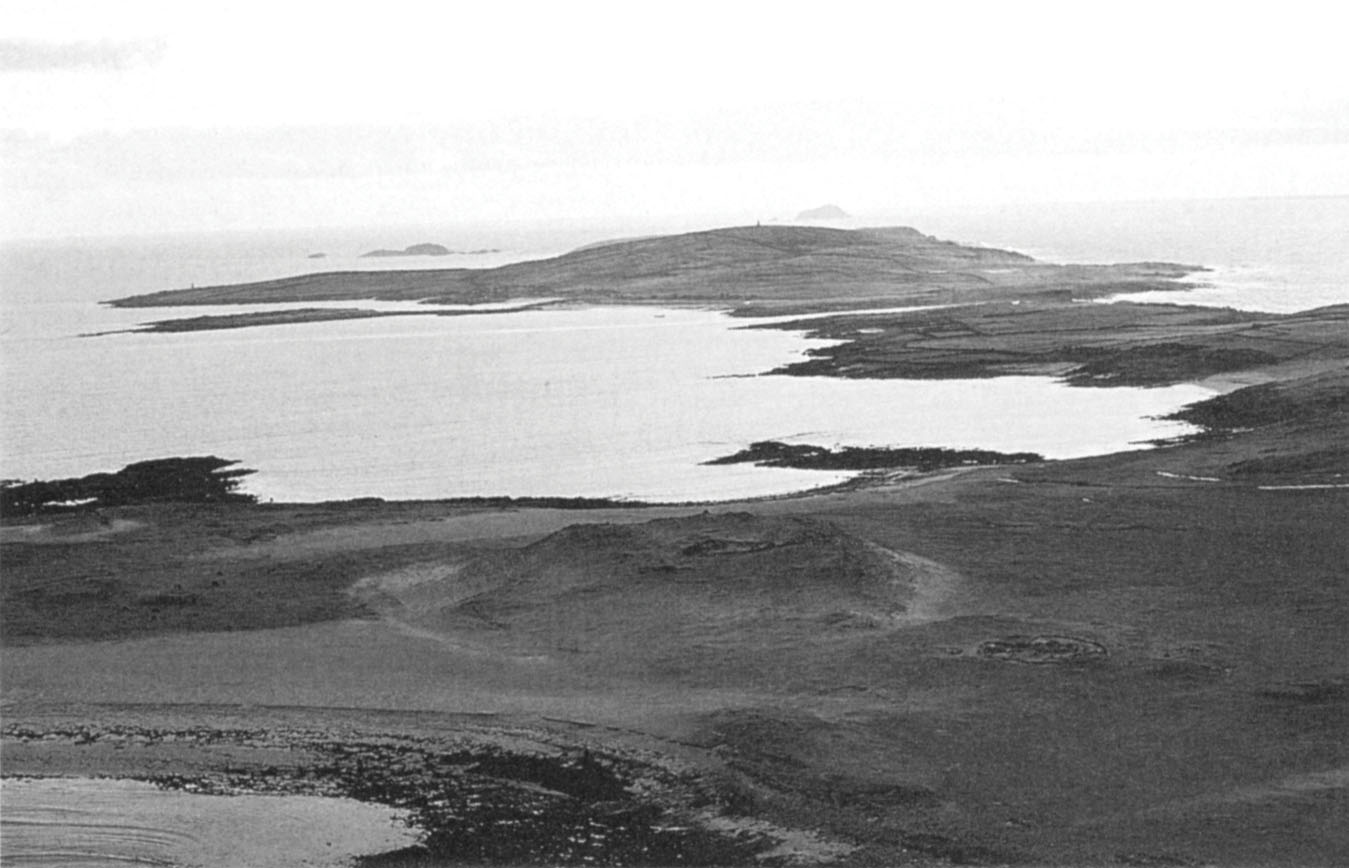
Remains of a sixth or early seventh century monastic settlement perched on the summit of the Bailey Mór, Inishkea North, Co. Mayo.
Early Christian monks and their nature poetry AD 600–800
From their austere and silent cells and monasteries the early Christian monks spoke eloquently of a love for the natural world. These men, scattered throughout the countryside, had plenty of time at their disposal to become the first observers of natural patterns, rhythms and cycles, and of a wide variety of living creatures, all of which had God for a cause. As well as being uplifting, their poetry yields to us today information regarding the natural surroundings with which they were familiar.
One of the better known poems from this period is Tánic sam on the coming of summer, taken from a Bodleian Library manuscript dating from the twelfth century but considered by James Carney to have originally been composed in the mid-ninth century or possibly earlier, and published by the Irish scholar Kuno Meyer.5,6 The version here was translated by Greene & O’Connor.1
‘Summer’s come, healthy free, that bows down the dark wood;
The slim, spry deer jumps and the seal’s path is smooth.
The cuckoo sings sweet music, and there is smooth, soft sleep.
Birds skim the quiet hill and the swift grey stags.
The deer’s lair is too hot, and active packs cry pleasantly;
The white stretch of strand smiles and the swift sea grows rough.
There is a noise of wanton winds in the palace of the oakwood of Drumdell;
The fine clipped horses who shelter in Cuan Wood are rushing about.
Green bursts out from every plant; leafy is the shoot of the green oakwood.
Summer has come, winter gone, twisted hollies hurt the stag.
The hardy blackbird who owns the thorny wood sings a bass;


